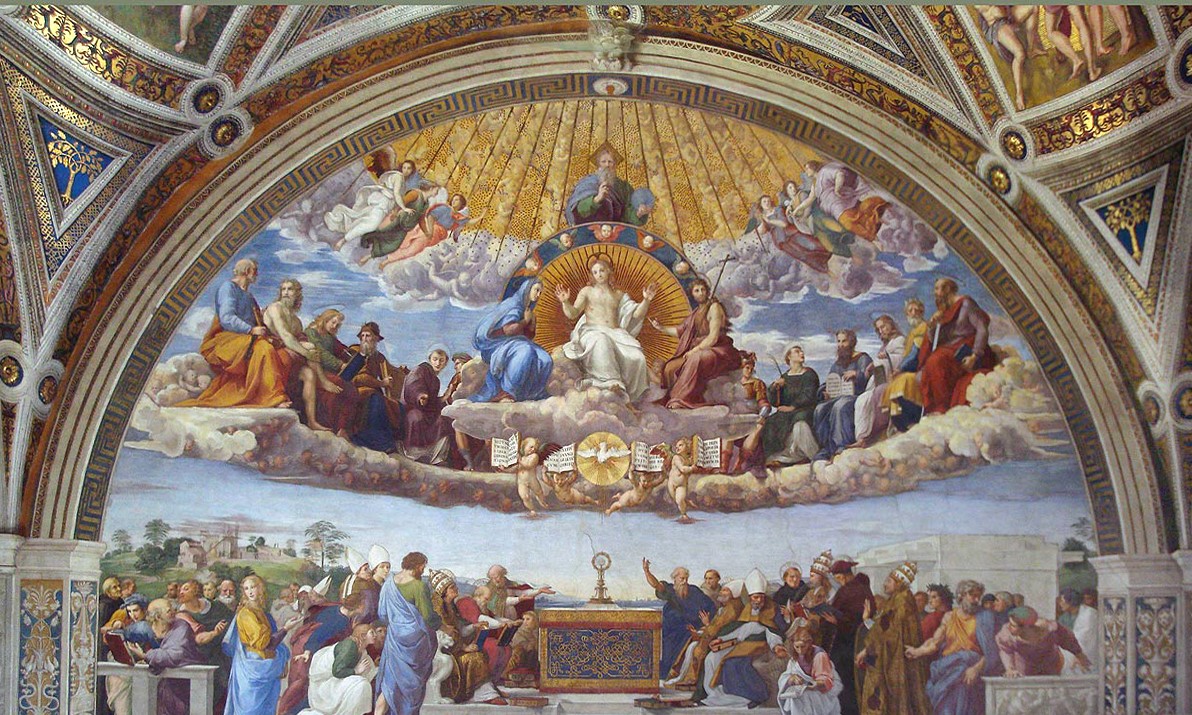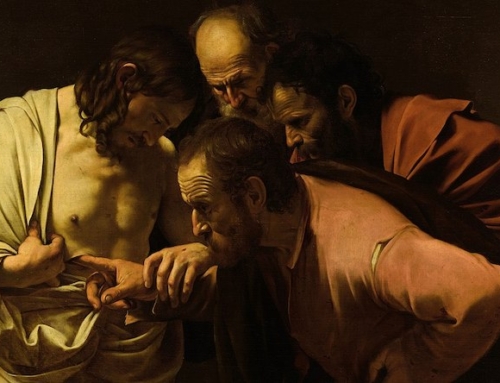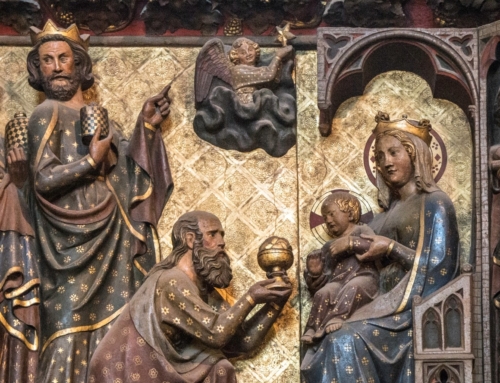Panis Vivus: An Essay on the Eucharist
A “panis vivus” essay is meant to convey, in no uncertain terms, that the Eucharist is really and truly the body, blood, soul, and divinity of Our Lord Jesus Christ. It is our collective response to the 2019 Pew Research Center survey, which reported that only a third of United States Catholics believe in the Real Presence.
When we attend Mass, at the moment of consecration, as the host is lifted into the air by the priest, something extraordinary is happening. Although it may not be self-evident, God, through his presence in the Eucharist, has brought together in that very sanctuary the entire Kingdom of God. As Lumen Gentium elaborates, “Celebrating the Eucharistic sacrifice therefore, we are most closely united to the Church in heaven” (Lumen Gentium, 50). But not only are we united with the Church in heaven and offer our prayers for the needs of the living, the Sacrifice of the Mass “is rightly offered according to apostolic tradition … also for those who have died in Christ but are not wholly purified” (Council of Trent, DZ 1743). Thus, the Church Militant, Church Suffering, and Church Triumphant are united together in each and every sacrifice of the Mass.
Of our own accord, we mere humans cannot directly perceive the divinity of God as he really exists in the consecrated bread and wine. This is only possible for God or the angels and saints through God (ST, III, q. 76, a.8). And because we cannot see the divine reality in the Eucharist, we cannot see how the Church is united to Jesus through the Eucharist. Since man is not in the beatific vision, he is precluded from this blessing.
And yet, God, in his infinite wisdom, gives some people a special grace to experience the Sacrament in its eternal splendor. Within our own Dominican family, St. Thomas Aquinas, “during Mass, often would be seized by such strong feelings of devotion that he dissolved in tears, because he was absorbed in the holy mysteries of the great sacrament and invigorated by its offerings” (Thomae Aquinatis vitae fontes praecipue, n. 30, p. 73).
Other saints have had experiences of the Eucharist that made the unity of the church more apparent. Of the saints and angels in heaven, Saint Bridget of Sweden describes seeing the miraculous during the Eucharistic celebration. Just after the priest uttered the words of consecration, she observed the Lamb in the Eucharist itself and the Blessed Mother in adoration, “attended to by the angels, and a multitude of holy souls so numerous that my eyes could not contain it all” (The Hymn of the Angel, Book VIII; 54). As Christ comes to be with man in the Eucharist, so do the saints come to actively take part in worshipping the Eucharistic Lord as well.
The souls of purgatory also participate, although passively, in the Eucharistic Banquet. We are told that our Dominican brother, Blessed Henry Suso, made a pact with a fellow friar that, upon the death of one of them, the other would offer masses for their soul. Suso’s companion died and, although he prayed fervently for him, he forgot to say the Masses he had promised. His departed confrère appeared to him one morning and “tenderly reproached him for having been unfaithful to his word.” He went on to clarify that, despite Bl. Henry’s many prayers, “it is the August Sacrifice which will deliver me from these frightful torments” of purgatory (Schouppe, Purgatory Explained, 203-04). Not only is the Eucharist worshipped by those in heaven and of paramount importance for man and his journey to God on earth, it also offers the ultimate salve for those souls in purgatory.
When we attend the Mass, let us unite our prayers, through Christ in the Eucharist, to the praises of the saints, especially the Virgin Mary, and offer our petitions for the souls in purgatory. Let the Eucharist remain the center of our lives and may we always look toward the heavenly kingdom, where we too strive to one day sing God’s praises forever.
✠
Image: Raphael, A Disputa do Sacramento







